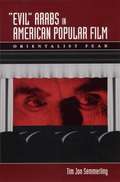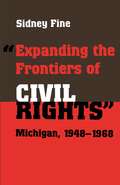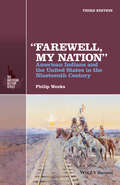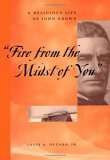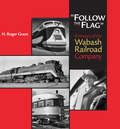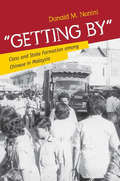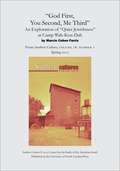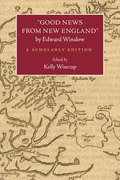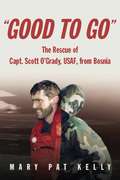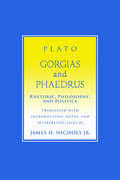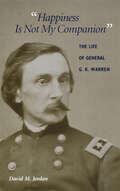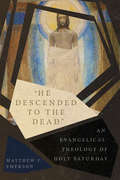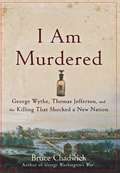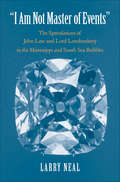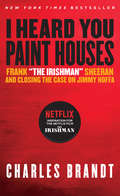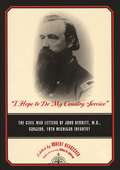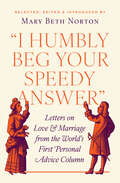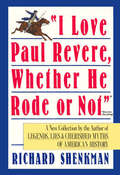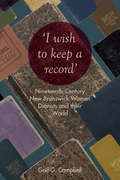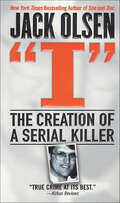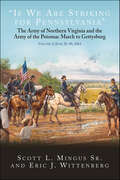- Table View
- List View
"Evil People"
by Johannes Dillinger Laura StokesInspired by recent efforts to understand the dynamics of the early modern witch hunt, Johannes Dillinger has produced a powerful synthesis based on careful comparisons. Narrowing his focus to two specific regions--Swabian Austria and the Electorate of Trier--he provides a nuanced explanation of how the tensions between state power and communalism determined the course of witch hunts that claimed over 1,300 lives in sixteenth- and seventeenth-century Germany. Dillinger finds that, far from representing the centralizing aggression of emerging early states against local cultures, witch hunts were almost always driven by members of the middling and lower classes in cities and villages, and they were stopped only when early modern states acquired the power to control their localities.Situating his study in the context of a pervasive magical worldview that embraced both orthodox Christianity and folk belief, Dillinger shows that, in some cases, witch trials themselves were used as magical instruments, designed to avert threats of impending divine wrath. "Evil People" describes a two-century evolution in which witch hunters who liberally bestowed the label "evil people" on others turned into modern images of evil themselves.In the original German, "Evil People" won the Friedrich Spee Award as an outstanding contribution to the history of witchcraft.
"Evil" Arabs in American Popular Film: Orientalist Fear
by Tim Jon SemmerlingLooking at their narrative structures and visual tropes, he analyzes how the films portray Arabs as threatening to subvert American "truths" and mythic tales—and how the insecurity this engenders causes Americans to project evil character and intentions on Arab peoples, landscapes, and cultures. Semmerling also demonstrates how the "evil" Arab narrative has even crept into the documentary coverage of 9/11. Overall, Semmerling's probing analysis of America's Orientalist fears exposes how the "evil" Arab of American popular film is actually an illusion that reveals more about Americans than Arabs.
"Expanding the Frontiers of Civil Rights": Michigan, 1948-1968 (Great Lakes Books Series)
by Sidney FineAlthough historians have devoted a great deal of attention to the development of federal government policy regarding civil rights in the quarter century following World War II, little attention has been paid to the equally important developments at the state level. Few states underwent a more dramatic transformation with regard to civil rights than Michigan did. In 1948, the Michigan Committee on Civil Rights characterized the state of civil rights in Michigan as presenting "an ugly picture." Twenty years later, Michigan was a leader among the states in civil rights legislation. "Expanding the Frontiers of Civil Rights" documents this important shift in state level policy and makes clear that civil rights in Michigan embraced not only blacks but women, the elderly, native Americans, migrant workers, and the physically handicapped.
"Farewell, My Nation": American Indians and the United States in the Nineteenth Century (The American History Series)
by Philip WeeksThe fully updated third edition of “Farewell, My Nation” considers the complex and often tragic relationships between American Indians, white Americans, and the U.S. government during the nineteenth century, as the government tried to find ways to deal with social and political questions about how to treat America’s indigenous population. Updated to include new scholarship that has appeared since the publication of the second edition as well as additional primary source material Examines the cultural and material impact of Western expansion on the indigenous peoples of the United States, guiding the reader through the significant changes in Indian-U.S. policy over the course of the nineteenth century Outlines the efficacy and outcomes of the three principal policies toward American Indians undertaken in varying degrees by the U.S. government – Separation, Concentration, and Americanization – and interrogates their repercussions Provides detailed descriptions, chronology and analysis of the Plains Wars supported by supplementary maps and illustrations
"Fire From the Midst of You": A Religious Life of John Brown
by Louis A. Decaro Jr.Reveals a complex new portrait of John Brown, radical abolitionist and leader of the 1859 raid on Harper's FerryJohn Brown is usually remembered as a terrorist whose unbridled hatred of slavery drove him to the ill-fated raid on Harper's Ferry, Virginia, in 1859. Tried and executed for seizing the arsenal and attempting to spur a liberation movement among the slaves, Brown was the ultimate cause celebre for a country on the brink of civil war.“Fire from the Midst of You” situates Brown within the religious and social context of a nation steeped in racism, showing his roots in Puritan abolitionism. DeCaro explores Brown's unusual family heritage as well as his business and personal losses, retracing his path to the Southern gallows. In contrast to the popular image of Brown as a violent fanatic, DeCaro contextualizes Brown's actions, emphasizing the intensely religious nature of the antebellum US in which he lived. He articulates the nature of Brown's radical faith and shows that, when viewed in the context of his times, he was not the religious fanatic that many have understood him to be. DeCaro calls Brown a “Protestant saint”—an imperfect believer seeking to realize his own perceived calling in divine providence.In line with the post-millennial theology of his day, Brown understood God as working through mankind and the church to renew and revive sinful humanity. He read the Bible not only as God's word, but as God's word to John Brown. DeCaro traces Brown's life and development to show how by forging faith as a radical weapon, Brown forced the entire nation to a point of crisis. “Fire from the Midst of You” defies the standard narrative with a new reading of John Brown. Here is the man that the preeminent Black scholar W.E.B. Du Bois called a "mighty warning" and the one Malcolm X called “a real white liberal.”
"Follow the Flag": A History of the Wabash Railroad Company
by H. Roger Grant"Follow the Flag" offers the first authoritative history of the Wabash Railroad Company, a once vital interregional carrier. The corporate saga of the Wabash involved the efforts of strong-willed and creative leaders, but this book provides more than traditional business history. Noted transportation historian H. Roger Grant captures the human side of the Wabash, ranging from the medical doctors who created an effective hospital department to the worker-sponsored social events. And Grant has not ignored the impact the Wabash had on businesses and communities in the "Heart of America."Like most major American carriers, the Wabash grew out of an assortment of small firms, including the first railroad to operate in Illinois, the Northern Cross. Thanks in part to the genius of financier Jay Gould, by the early 1880s what was then known as the Wabash, St. Louis & Pacific Railway reached the principal gateways of Chicago, Des Moines, Detroit, Kansas City, and St. Louis. In the 1890s, the Wabash gained access to Buffalo and direct connections to Boston and New York City.One extension, spearheaded by Gould's eldest son, George, fizzled. In 1904 entry into Pittsburgh caused financial turmoil, ultimately throwing the Wabash into receivership. A subsequent reorganization allowed the Wabash to become an important carrier during the go-go years of the 1920s and permitted the company to take control of a strategic "bridge" property, the Ann Arbor Railroad.The Great Depression forced the company into another receivership, but an effective reorganization during the early days of World War II gave rise to a generally robust road. Its famed Blue Bird streamliner, introduced in 1950 between Chicago and St. Louis, became a widely recognized symbol of the "New Wabash." When "merger madness" swept the railroad industry in the 1960s, the Wabash, along with the Nickel Plate Road, joined the prosperous Norfolk & Western Railway, a merger that worked well for all three carriers.Immortalized in the popular folk song "Wabash Cannonball," the midwestern railroad has left important legacies. Today, forty years after becoming a "fallen flag" carrier, key components of the former Wabash remain busy rail arteries and terminals, attesting to its historic value to American transportation.
"Getting By": A Historical Ethnography of Class and State Formation in Malaysia
by Donald M. NoniniHow do class, ethnicity, gender, and politics interact? In what ways do they constitute everyday life among ethnic minorities? In "Getting By," Donald M. Nonini draws on three decades of research in the region of Penang state in northern West Malaysia, mainly in the city of Bukit Mertajam, to provide an ethnographic and historical account of the cultural politics of class conflict and state formation among Malaysians of Chinese descent. Countering triumphalist accounts of the capitalist Chinese diaspora in Southeast Asia, Nonini shows that the Chinese of Penang (as elsewhere) are riven by deep class divisions and that class issues and identities are omnipresent in everyday life. Nor are the common features of "Chinese culture" in Malaysia manifestations of some unchanging cultural essence. Rather, his long immersion in the city shows, they are the results of an interaction between Chinese-Malaysian practices in daily life and the processes of state formation--in particular, the ways in which Kuala Lumpur has defined different categories of citizens. Nonini's ethnography is based on semistructured interviews; participant observation of events, informal gatherings, and meetings; a commercial census; intensive reading of Chinese-language and English-language newspapers; the study of local Chinese-language sources; contemporary government archives; and numerous exchanges with residents.
"God First, You Second, Me Third": An Exploration of 'Quiet Jewishness' at Camp Wah-Kon-Dah
by Marcie Cohen FerrisThis was an anxious time for American Jews, stung by the anti-Semitic quotas and discrimination of the interwar years and the growing horror regarding the fate of European Jewry as the Holocaust came to light in the 1940s."This article appears in the Spring 2012 issue of Southern Cultures. The full issue is also available as an ebook.Southern Cultures is published quarterly (spring, summer, fall, winter) by the University of North Carolina Press. The journal is sponsored by the University of North Carolina at Chapel Hill's Center for the Study of the American South.
"Good News from New England" by Edward Winslow: A Scholarly Edition
by Kelly WisecupFirst published in 1624, Edward Winslow’s Good News from New England chronicles the early experience of the Plimoth colonists, or Pilgrims, in the New World. For several years Winslow acted as the Pilgrims’ primary negotiator with New England Algonquians, including the Wampanoag, Massachusett, and Narragansett Indians. During this period he was credited with having cured the Wampanoag sachem Massasoit, one of the colonists’ most valuable allies, of an apparently life-threatening illness, and he also served as the Pilgrims’ chief agent in England. <p><p> It was in the context of all of these roles that Winslow wrote Good News in an attempt to convince supporters in England that the colonists had established friendly relations with Native groups and, as a result, gained access to trade goods. Although clearly a work of diplomacy, masking as it did incidents of brutal violence against Indians as well as evidence of mutual mistrust, the work nevertheless offers, according to Kelly Wisecup, a more complicated and nuanced representation of the Pilgrims’ first years in New England and of their relationship with Native Americans than other primary documents of the period. <p> In this scholarly edition, Wisecup supplements Good News with an introduction, additional primary texts, and annotations to bring to light multiple perspectives, including those of the first European travelers to the area, Native captives who traveled to London and shaped Algonquian responses to colonists, the survivors of epidemics that struck New England between 1616 and 1619, and the witnesses of the colonists’ attack on the Massachusetts.
"Good to Go"
by Mary Pat KellySo perfectly executed was the mission to rescue Capt. Scott O'Grady that it amazed even the men responsible. Just five hours after radio contact was first made with Basher 52 - O'Grady's call sign the Air Force captain was safely on board the USS Kearsarge. The downed F-16 fighter pilot's rescue from a Bosnian mountainside by Col. Martin Berndt's 24th Marine Expeditionary Unit electrified the nation in June 1995 and renewed many Americans' faith in the military. This book tells the story of the mission in the words of the men who commanded, planned, and carried it out. To get the inside account, Mary Pat Kelly traveled throughout Europe to conduct more than one hundred interviews, visiting U. S. ships and bases and UN posts in Croatia and Bosnia where participants were stationed. Admiral Leighton W. Smith Jr. , commander in chief of U. S. naval forces in Europe and head of NATO forces in the Southern European theater, provides the framework with his day-to-day commentary on the efforts to find Captain O'Grady and a nearly minute-by-minute record of the rescue itself. In concert with Lt. Gen. Michael E. Ryan, commander of U. S. and NATO air forces, the admiral reveals the decision-making process that led to the "Good to Go" order. Readers then hear from the Tactical Recovery of Aircraft and Personnel (TRAP) team-the Navy and Marine Corps commanders, pilots, crew chiefs, and grunts who made it happen. Speaking for the Navy are Capt. Christopher Cole, skipper of the Kearsarge, Commo. Jerome Schill, and their staffs, from the intelligence officers to the grapes who fueled the aircraft. Captain O'Grady puts his own experiences in the context of overall events.
"Gorgias" and "Phaedrus": Rhetoric, Philosophy, and Politics
by Plato James H. Nichols Jr.With a masterful sense of the place of rhetoric in both thought and practice and an ear attuned to the clarity, natural simplicity, and charm of Plato's Greek prose, James H. Nichols Jr., offers precise yet unusually readable translations of two great Platonic dialogues on rhetoric.The Gorgias presents an intransigent argument that justice is superior to injustice: To the extent that suffering an injustice is preferable to committing an unjust act. The dialogue contains some of Plato's most significant and famous discussions of major political themes, and focuses dramatically and with unrivaled intensity on Socrates as a political thinker and actor. Featuring some of Plato's most soaringly lyrical passages, the Phaedrus investigates the soul's erotic longing and its relationship to the whole cosmos, as well as inquiring into the nature of rhetoric and the problem of writing.Nichols's attention to dramatic detail brings the dialogues to life. Plato's striking variety in conversational address (names and various terms of relative warmth and coolness) is carefully reproduced, as is alteration in tone and implication even in the short responses. The translations render references to the gods accurately and non-monotheistically for the first time, and include a fascinating variety of oaths and invocations. A general introduction on rhetoric from the Greeks to the present shows the problematic relation of rhetoric to philosophy and politics, states the themes that unite the two dialogues, and outlines interpretive suggestions that are then developed more fully for each dialogue.The twin dialogues reveal both the private and the political rhetoric emphatic in Plato's philosophy, yet often ignored in commentaries on it. Nichols believes that Plato's thought on rhetoric has been largely misunderstood, and he uses his translations as an opportunity to reconstruct the classical position on right relations between thought and public activity.
"Happiness Is Not My Companion": The Life of General G. K. Warren
by David M. JordanThe valorous but troubled career of the Civil War general best known for defending Little Round Top and averting a Union defeat at Gettysburg.The lieutenant colonel of a New York regiment and rising star in the Army of the Potomac, Gouverneur K. Warren performed heroically at Gettysburg. For his service at Bristoe Station and Mine Run, he was awarded command of the Fifth Corps for the 1864 Virginia campaign.But Warren’s peculiarities of temperament and personality put a cloud over his service at the Wilderness and Spotsylvania and cost him the confidence of his superiors, Grant and Meade. He was summarily relieved of his command by Philip Sheridan after winning the Battle of Five Forks, just eight days before Appomattox. Warren continued as an engineer of distinction in the Army after the war, but he was determined to clear his name before a board of inquiry, which conducted an exhaustive investigation into the battle, Warren’s conduct, and Sheridan’s arbitrary action. However, the findings of the court vindicating Warren were not made public until shortly after his death.For this major biography of Gouverneur Warren, David M. Jordan utilizes Warren’s own voluminous collection of letters, papers, orders, and other items saved by his family, as well as the letters and writings of such contemporaries as his aide and brother-in-law Washington Roebling, Andrew Humphreys, Winfield Hancock, George Gordon Meade, and Ulysses S. Grant. Jordan presents a vivid account of the life and times of a complex military figure.
"He Descended to the Dead": An Evangelical Theology of Holy Saturday
by Matthew Y. EmersonThe Gospel Coalition"I believe he descended to the dead."
"I Am Murdered": George Wythe, Thomas Jefferson, and the Killing That Shocked a New Nation
by Bruce ChadwickHe signed the Declaration of Independence, represented Virginia at the Constitutional Convention, and became America's first professor of law. With his close friend and former pupil Thomas Jefferson, who once described him as a "second father," he wrote an entire new legal code for the State of Virginia. At the age of eighty in 1806, George Wythe was loved, admired, and respected by all who knew him--all but one, that is. In I Am Murdered, celebrated historian Bruce Chadwick tells the grisly, fascinating, and often astounding tale of Wythe's murder and America's very first "trial of the century." Brimming with fascinating details of early nineteenth-century medicine, forensic science, and legal issues, this fast-moving account features compelling portraits of all major players in the case and asks penetrating questions about the many controversies that swirled around the trial. George Wythe lived long enough to accuse his grandnephew George Wythe Sweeney of poisoning him and two other members of his household. Why did three prominent doctors, all friends of Wythe, insist that he hadn't been poisoned at all? Why did Wythe repeatedly refuse to press charges against Sweeney, who had forged Wythe's name on checks and stolen and sold many of his rare and precious books? Wythe's maid, Lydia Broadnax, the sole survivor of the poisoning, was also the only eyewitness to the crime. Her account was entirely credible, and she was widely recognized as an honest, reliable, and honorable woman. Why was she forbidden to testify at the trial? The answers to these questions and many more become lenses through which to view a city and a nation at a crucial and formative period of their history. Among the many distinctive figures you'll meet in this strange and chilling true story are the two attorneys who came to Sweeney's defense. Both had been good friends of Wythe and were certain of the young man's guilt, but each man had a powerful personal motive to work tirelessly for Sweeney's acquittal. One was a former attorney general of the United States, and the other was destined to become the longest-sewing attorney general in American history: Complete with a satisfying account of Wythe's ultimate revenge and a poignant depiction of his deep and abiding friendship with Jefferson, I Am Murdered is part American tragedy, part CSI circa 1806, and all intriguing examination of the unjust death of a Founding Father.
"I Am Not Master of Events"
by Larry NealTwo of the greatest financial fiascos of all time took place at the same time and were instigated by two acquaintances: the Mississippi Bubble, on which John Law at first made a vast fortune and gained sway over French finances; and the South Sea Bubble, launched by Law and Thomas Pitt, Jr. , Lord Londonderry, his main partner in England. This book tells the story of these two financial schemes from the letters and accounts of two leading personalities. Larry Neal, a distinguished economic historian, highlights the rationality of each person and also finds that the primitive exchanges of the day, though informal and completely unregulated, actually performed reasonably well.
"I Hear America Singing": Folk Music and National Identity
by Rachel Clare DonaldsonFolk music is more than an idealized reminder of a simper past. It reveals a great deal about present-day understandings of community and belonging. It celebrates the shared traditions that define a group or nation. In America, folk music--from African American spirituals to English ballads and protest songs--renders the imagined community more tangible and comprises a critical component of our diverse national heritage. In "I Hear America Singing," Rachel Donaldson traces the vibrant history of the twentieth-century folk music revival from its origins in the 1930s through its end in the late 1960s. She investigates the relationship between the revival and concepts of nationalism, showing how key figures in the revival--including Pete Seeger , Alan Lomax, Moses Asch, and Ralph Rinzler--used songs to influence the ways in which Americans understood the values, the culture, and the people of their own nation. As Donaldson chronicles how cultural norms were shaped over the course of the mid-twentieth century, she underscores how various groups within the revival and their views shifted over time. "I Hear America Singing" provides a stirring account of how and why the revivalists sustained their culturally pluralist and politically democratic Americanism over this tumultuous period in American history.
"I Heard You Paint Houses", Updated Edition: Frank "The Irishman" Sheeran & Closing the Case on Jimmy Hoffa
by Charles BrandtUpdated with a 57-page Conclusion by the author that features new, independent corroboration of Frank Sheeran's revelations about the killing of Jimmy Hoffa, the killing of Joey Gallo and the murder of JFK, along with stories that could not be told before."I Heard You Paint Houses" will soon be a major motion picture directed by Martin Scorsese. The working title for the movie is "The Irishman".The first words Jimmy Hoffa ever spoke to Frank "the Irishman" Sheeran were, "I heard you paint houses." To paint a house is to kill a man. The paint is the blood that splatters on the walls and floors. In the course of nearly five years of recorded interviews Frank Sheeran confessed to Charles Brandt that he handled more than twenty-five hits for the mob, and for his friend Hoffa. Sheeran learned to kill in the U.S. Army, where he saw an astonishing 411 days of active combat duty in Italy during World War II. After returning home he became a hustler and hit man, working for legendary crime boss Russell Bufalino. Eventually he would rise to a position of such prominence that in a RICO suit then-U.S. Attorney Rudy Giuliani would name him as one of only two non-Italians on a list of 26 top mob figures. When Bufalino ordered Sheeran to kill Hoffa, he did the deed, knowing that if he had refused he would have been killed himself. Sheeran's important and fascinating story includes new information on other famous murders including those of Joey Gallo and JFK, and provides rare insight to a chapter in American history. Charles Brandt has written a page-turner that has become a true crime classic.From the Trade Paperback edition.
"I Hope to Do My Country Service": The Civil War Letters of John Bennitt, M.D., Surgeon, 19th Michigan Infantry
by William M. Anderson Robert BeaseckerIn 1862 at the age of thirty-two, Centreville, Michigan, physician John Bennitt joined the 19th Michigan Infantry Regiment as an assistant surgeon and remained in military service for the rest of the war. During this time Bennitt wrote more than two hundred letters home to his wife and daughters sharing his careful and detailed observations of army life, his medical trials in the field and army hospitals, dramatic battles, and character sketches of the many people he encountered, including his regimental comrades, captured Confederates, and local citizens in southern towns. Bennitt writes about the war's progress on both the battlefield and the home front, and also reveals his changing view of slavery and race.Bennitt traces the history of the 19th Michigan Infantry, from its mustering in Dowagiac in August 1862, its duty in Kentucky and Tennessee, its capture and imprisonment by Confederate forces, its subsequent exchange and reorganization, its participation in the Atlanta and the Carolinas campaigns, its place in the Grand Review in Washington, and the final mustering out in Detroit in June 1865. John Bennitt's significant collection of letters sheds light not only on the Civil War but on the many aspects of life in a small Michigan town. Although a number of memoirs from Civil War surgeons have been published in the last decade, "I Hope to Do My Country Service" is the first of its kind from a Michigan regimental surgeon to appear in more than a century.
"I Humbly Beg Your Speedy Answer": Letters on Love and Marriage from the World’s First Personal Advice Column
by Mary Beth NortonA fascinating collection of questions and answers—about courtship, marriage, love, and sex—from a seventeenth-century periodical The Athenian Mercury—a one-page, two-sided periodical published in 1690s London—included the world&’s first personal advice column. Acclaimed historian and Pulitzer Prize–finalist Mary Beth Norton&’s &“I Humbly Beg Your Speedy Answer&” is a remarkable collection of questions and answers drawn from this groundbreaking publication.In these exchanges, anonymous readers look for help with their most intimate romantic problems—about courting, picking a spouse, getting married, securing or avoiding parental consent, engaging in premarital sex and extramarital affairs, and much more. Spouses ask how to handle contentious marriages and tense relationships with in-laws. Some correspondents seek ways to ease a conscience troubled by romantic and sexual misbehavior. The lonely wonder how to meet a potential partner—or how to spark a warmer relationship with someone they already have an eye on. And both men and women inquire about how to extract themselves from relationships turned sour. Many of these concerns will be familiar to readers of today&’s advice columns. But others are delightfully strange and surprising, reflecting forgotten social and romantic customs and using charmingly unfamiliar language in which, for example, &“kissing is a luscious diet,&” a marriage might provide &“much love and moderate conveniency,&” and an &“amorous disposition&” can lead to trouble.Delightful and entertaining, &“I Humbly Beg Your Speedy Answer&” provides a unique, intriguing, and revealing picture of what has—and hasn&’t—changed over the past three centuries when it comes to love, sex, and relationships.
"I Love Paul Revere, Whether He Rode Or Not"
by Richard ShenkmanProvocative and amusingly heretical, "I Love Paul Revere, Whether He Rode or Not" (a quote attributed to Warren Harding) offers eye-opening revelations debunking long-held American legends.
"I Love Paul Revere, Whether He Rode Or Not": A Collection of Legends, Lies, & Cherished Myths of American
by Richard ShenkmanProvocative and amusingly heretical, "I Love Paul Revere, Whether He Rode or Not" (a quote attributed to Warren Harding) offers eye-opening revelations debunking long-held American legends.
"I wish to keep a record": Nineteenth-Century New Brunswick Women Diarists and Their World
by Gail CampbellNineteenth-century New Brunswick society was dominated by white, Protestant, Anglophone men. Yet, during this time of state formation in Canada, women increasingly helped to define and shape a provincial outlook. I wish to keep a record is the first book to focus exclusively on the life-course experiences of nineteenth-century New Brunswick women. Gail G. Campbell offers an interpretive scholarly analysis of 28 women’s diaries while enticing readers to listen to the voices of the diarists. Their diaries show women constructing themselves as individuals, assuming their essential place in building families and communities, and shaping their society by directing its outward gaze and envisioning its future. Campbell’s lively analysis calls on scholars to distinguish between immigrant and native-born women and to move beyond present-day conceptions of such women’s world. This unique study provides a framework for developing an understanding of women's worlds in nineteenth-century North America.
"I": The Creation of a Serial Killer
by Jack OlsenThe prize-winning, bestselling journalist provides a fascinating glimpse into the mind of “The Happy Face Killer” in the serial murderer’s own words . . .In February 1990, Oregon State Police arrested John Sosnovke and Laverne Pavlinac for the vicious rape and murder of Taunja Bennet, a troubled twenty-three-year-old barfly who had a mild intellectual disability since birth. There was just one problem. They had the wrong people.And the real killer wasn’t about to let anyone take credit for his kill. Keith Hunter Jesperson was a long-haul truck driver and the murderer of eight women, including Taunja Bennet. As the case wound through police precincts and courts—ending in life sentences for both Sosnovke and Pavlinac—Jesperson began a twisted one-man campaign to win their release. To the editors of newspapers and on the walls of highway rest stops, Jesperson scribbled out a series of taunting confessions. At the end of each admission, Jesperson drew a happy face, earning for himself the grisly sobriquet “The Happy Face Killer.”Based on access to interviews, diaries, court records, and the criminal himself, I: The Creation of a Serial Killer is Jesperson’s chilling story. It chronicles his evolution from angry child to sociopathic murderer, from tormentor of animals to torturer of women. It is also the story of the fate that befell him after two innocent citizens were imprisoned four years for one of his killings.In I: The Creation of a Serial Killer, Edgar Award winner Jack Olsen lets Jesperson tell his story in his own words, offering unprecedented insight into the twisted thought process of a serial murderer.
"I'll Be There for You"
by Warren LittlefieldAn eBook short.A behind-the-scenes look at Friends, one of the most popular TV shows of all time--a wide-ranging interview with the cast and creators, excerpted from Top of the Rock, by former NBC President of Entertainment Warren LittlefieldIt was a little show originally called Six of One, whose pilot only tested decently with audiences--but all of that would soon change. "I'll Be There for You" presents a colorful, funny, and enlightening oral history drawn from the actors and creators of Friends. Outlining the whole history of the show, from first episode to last, including testimonials straight from the studio floor, this selection reveals the personal side of the "Shakespearean soap opera," including how the actors dealt with fame, helped to create their roles, negotiated and grew together as one family, and (of course) how Joey became Joey.
"If We Are Striking for Pennsylvania", Volume 2: The Army of Northern Virginia and the Army of the Potomac March to Gettysburg
by Eric J. Wittenberg Scott L. Mingus Sr.Award-winning authors Scott L. Mingus Sr. and Eric J. Wittenberg are back with the second and final installment of “If We Are Striking for Pennsylvania”: The Army of Northern Virginia’s and Army of the Potomac’s March to Gettysburg. This compelling and bestselling study is the first to fully integrate the military, political, social, economic, and civilian perspectives with rank-and-file accounts from the soldiers of both armies during the inexorably march north toward their mutual destinies at Gettysburg. Gen. Robert E. Lee’s bold movement north, which began on June 3, shifted the war out of the central counties of the Old Dominion into the Shenandoah Valley, across the Potomac, and beyond. The first installment (June 3-22, 1863) carried the armies through the defining mounted clash at Battle of Brandy Station, after which Lee pushed his corps into the Shenandoah Valley and achieved the magnificent victory at Second Winchester on his way to the Potomac. Caught flat-footed, Maj. Gen. Joseph Hooker used his cavalry to probe the mountain gaps, triggering a series of consequential mounted actions. The current volume (June 23-30) completes the march to Gettysburg and details the actions and whereabout of each component of the armies up to the eve of the fighting. The large-scale maneuvering in late June prompted General Hooker to move his Army of the Potomac north after his opponent and eventually above the Potomac, where he loses his command to the surprised Maj. Gen. George G. Meade. Jeb Stuart begins his controversial and consequential ride that strips away the eyes and ears of the Virginia army. Throughout northern Virginia, central Maryland, and south-central Pennsylvania, civilians and soldiers alike struggle with the reality of a mobile campaign and the massive logistical needs of the armies. Untold numbers of reports, editorials, news articles, letters, and diaries describe the passage of the long martial columns, the thunderous galloping of hooves, and the looting, fighting, suffering, and dying. Mingus and Wittenberg mined hundreds of primary accounts, newspapers, and other sources to produce this powerful and gripping saga. As careful readers will quickly discern, other studies of the runup to Gettysburg gloss over most of this material. It is simply impossible to fully grasp and understand the campaign without a firm appreciation of what the armies and the civilians did during the days leading up to the fateful meeting at the small crossroads town in Adams County, Pennsylvania.

